Often overlooked as just a prelude to the American Civil War, the Mexican-American War (sometimes referred to as the Mexican War in the USA) is much more important than just a training ground for Civil War officers. It was the biggest example of American politicians’ belief in Manifest Destiny, a three pronged concept:
- the belief that American society was just better and worth spreading
- the West should be settled by Americans and remade in the image of the Eastern USA
- the whole thing was ordained by our God, so it’s cool
Find more at Part Two via the link below:
Goonhammer Historicals: Getting Started – the Mexican-American War Part Two

Political History
We’re not really taught it here in the US of A, but it was a deeply divisive concept at the time. Most of us these days have images of wagons westward, settlers, and the gold rush, maybe with a little bit of anti-Indian genocide included, but many politicians and people at the time were against it. Historian Daniel Walker Howe wrote “American imperialism did not represent an American consensus; it provoked bitter dissent within the national polity”.¹
Many Republicans and Whigs were against it because it would help the growth of slavery – especially since Texas had been admitted to the Union as a slave state after being taken from Mexico. James K. Polk (D) was elected in 1844 specifically on the mission of admitting Texas, California, and Oregon to the USA by any means – he had a campaign slogan that was catchy – “54°40′ or fight!” – that came from the northern territory of Oregon.
Once Texas was admitted to the Union, there was a territorial dispute about the southern border of Texas. The US claimed it was the Rio Grande (the present day border) and Mexico claimed it was the Nueces River, which was further north. Polk decided to attempt to buy the land from Mexico, along with California and all other territories east of it (modern day Nevada, Utah, New Mexico, Arizona, and parts of Wyoming and Colorado). When that didn’t work out, he sent some troops over the border who were then attacked by Mexican troops. Polk used that as impetus to declare war.
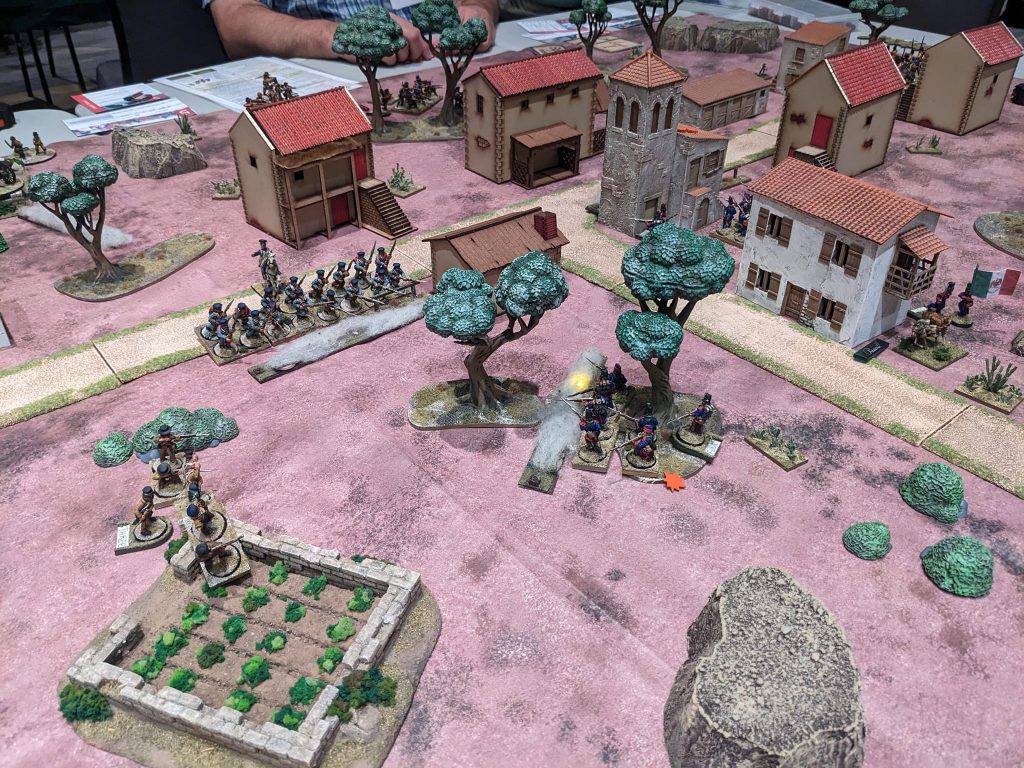
I can’t claim to fully understand the political history of Mexico at the time – it is something I’m doing my best to learn, but there is a lot to it. Mexico gained independence from Spain in 1821 after their successful revolution. Once that happened, there were so many coups and rebellions it’s hard to keep track, all the way through the 1800s. The biggest takeaway I have found, something that is extremely impressive to me, is that this fledgling country fought Spain, then America (the Texas Revolution), France in 1838, America again in 1848, then France again in 1861. Within 40 years they fought three major world powers and won two of the wars.
After the war was over, America gained a wide swath of land in the west and Mexico became largely what we know it is today. Gaining that much territory hugely inflamed the sectional conflict over slavery and would be a major cause of the Civil War. Ralph Waldo Emerson stated “The United States will conquer Mexico, but it will be as the man swallows the arsenic, which brings him down in turn. Mexico will poison us.” He was entirely correct.
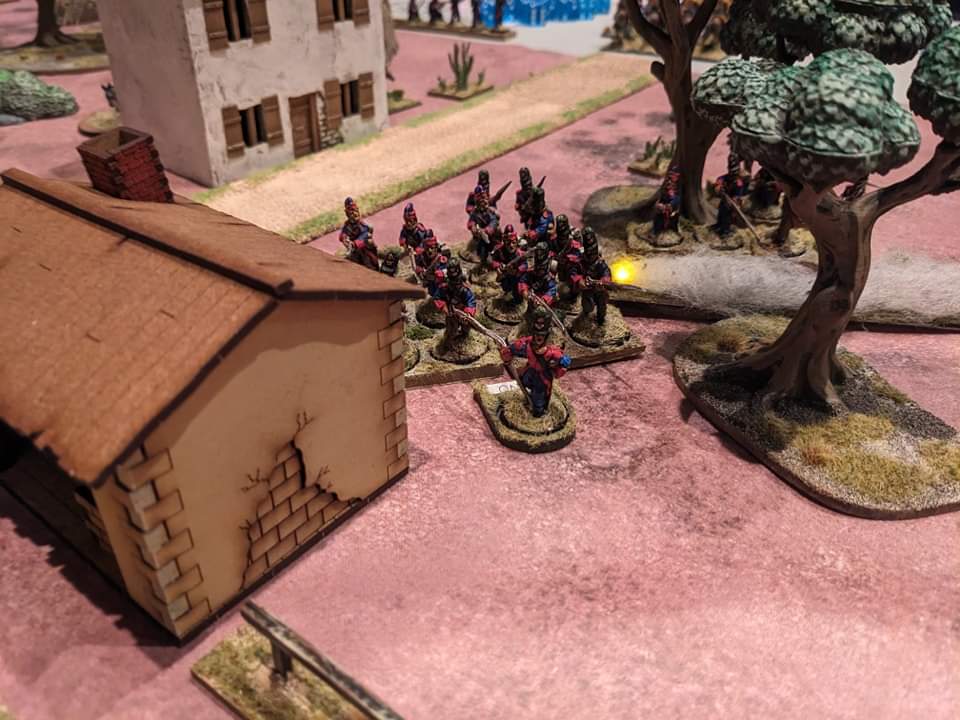
Genius general and later President Ulysses S. Grant stated “Generally the officers of the army were indifferent whether the annexation [of Texas] was consummated or not; but not so all of them. For myself, I was bitterly opposed to the measure, and to this day regard the war [with Mexico] which resulted as one of the most unjust ever waged by a stronger against a weaker nation. It was an instance of a republic following the bad example of European monarchies, in not considering justice in their desire to acquire additional territory.”

Conflict
For wargamers, the conflict can largely be boiled down to three places from 1846-1848:
- The West, where Stephen Kearny (uncle of very interesting Civil War general Phil Kearny) led a bunch of volunteers in a number of very small but interesting engagements. They eventually captured New Mexico and then moved onto California, where John C. Fremont, explorer, Civil War General, and future Presidential candidate, had created a rebellion with 300 settlers to capture California and fight sporadic skirmishes.
- Northern Mexico, where Zachary Taylor – Old Rough And Ready, future president – fought major battles at Palo Alto (American victory vs a larger force), Resaca de Palma (American victory vs a force 2x it’s size), Monterrey (Taylor forced a larger, fortified, supplied army to surrender), and Buena Vista (outnumbered three to one, Taylor won a tactical victory). Santa Anna retreated from Buena Vista to return to Mexico City after hearing of revolts.
- Winfield Scott’s invasion of the Mexican Heartland – the US Navy had blockaded Mexico for most of the war and used this to their advantage, landing Old Fuss and Feathers along with 12,000 troops at Veracruz to march inland and take Mexico City.
- Mexican generals counted on the Yellow Fever that was an epidemic in the eastern part of Mexico during that time (rightly) to slow Scott down and put his troops in the hospital – but it didn’t work. Scott’s troops moved through Santa Anna’s force at Cerro Gordo.
- Scott then moved on to Mexico City with a large force of volunteers and regulars and fought battles outside Mexico City at Contreras, Churubusco, Molino del Ray, and Chapultepec. This effectively ended the war.
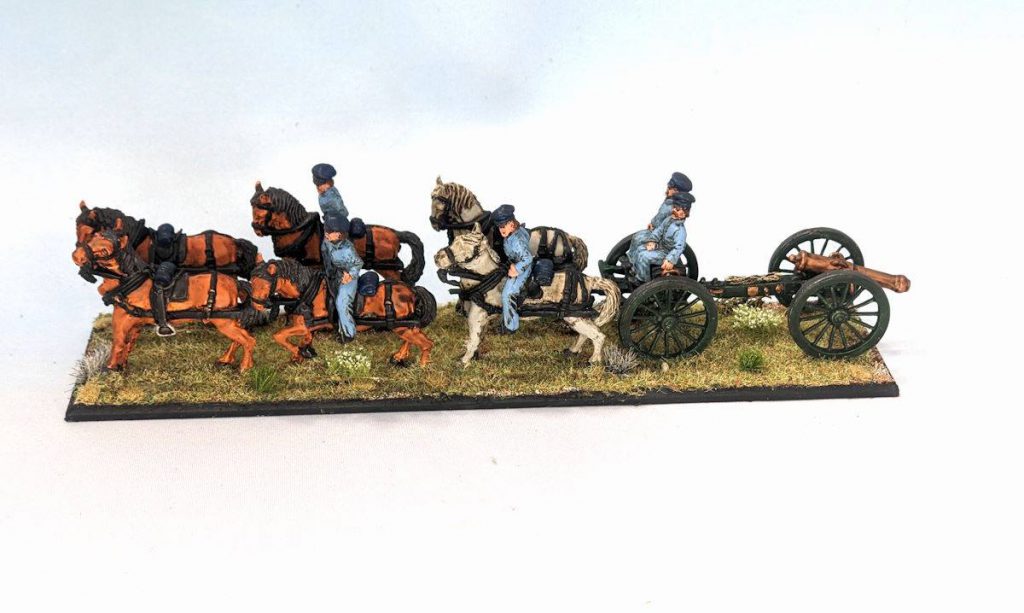
Forces Involved
The Mexican army at the time was largely conscripted – dudes were told they were in the army and they just suffered through it for years and years. If they were lucky they weren’t sent to the areas on the coast where Yellow Fever ripped through entire garrisons. While they were poorly led, poorly supplied, and poorly fed, the Mexican soldiers were very often commended by American soldiers at the time for being brave and sometimes fighting to the last man.
The key differentiators in this conflict were:
- American equipment was some of the best available. Flintlock muskets (and some percussion cap muskets) were smoothbore but reliable 1816 models.
- Light artillery pieces and howitzers model1841 developed and used by ‘flying artillery’ units in the American army were used to break formations and silence enemy guns. This was cutting-edge military technology and tactics for the time.
- Mexican muskets were very old Brown Bess muskets from the British surplus from the Napoleonic wars – very outdated for the time. Artillery was mostly leftover pieces from the Spanish occupation and outdated.
- Mexican powder was inferior, oftentimes requiring a double or triple load to get the bullet to where it needed to go. Period sources tell of Mexican soldiers hip-firing their muskets so they didn’t break their shoulders.
- US Volunteers were used in large quantities. The American public largely didn’t trust West Point (it was almost shut down) and didn’t trust having regular standing armies. This would change after the war, but regulars were used in limited quantities (to good effect). Volunteers, especially from Missouri, Mississippi, Louisiana, and Texas made up a large part of the force. Officers of the time mentioned how they were extremely ill-tempered and undisciplined, often resorting to looting and crime.

For the wargamer, there are a number of interesting units to use:
- American regulars: with a distinctive forage cap and sky blue uniform, they look neat and make a great sight on the wargaming battlefield. In game they’ll be rated better than volunteers.
- American flying artillery: a chance to paint horses and limber! I like light pieces to move around the field and add to the strategy for an American commander.
- American Volunteers: ill-trained rabble, they won’t be rated better than Mexican soldiers, but will have better equipment.
- US Dragoons: a very interesting cavalry unit used prior to the war to guard forts and towns along the frontier, they make for a great looking unit on the battlefield, and an excellent flank screener.
- Mexican regular infantry: while they were brave, their equipment and leadership was not good. If you’re playing a matched game vs US forces of regulars, you’ll likely have 2x the number of minis.
- Mexican light infantry: better trained, they were used in battle sometimes as line infantry fighting toe to toe with US forces. I chose to paint most of my units as this so I could have less of an asymmetric game.
- Grenadiers of the Supreme Power: formed by Santa Anna in 1841, they were a militia unit formed of sons of wealthy merchants in Mexico City. They have large grenadier caps and in-game might be rated a little tougher.
- Lancers: this time period was still famous for entire cavalry formations of lancers, especially on the flanks or in scouting parties. Mexican units with lances make for an excellent visual on the field, especially with their brightly colored uniforms.
- San Patricio Battalion: made up of Irish deserters from the American army, the St. Patrick’s Battalion in-game really should be rated like other Mexican regular infantry, but will have different flags and makes for an interesting story to tell on the field.
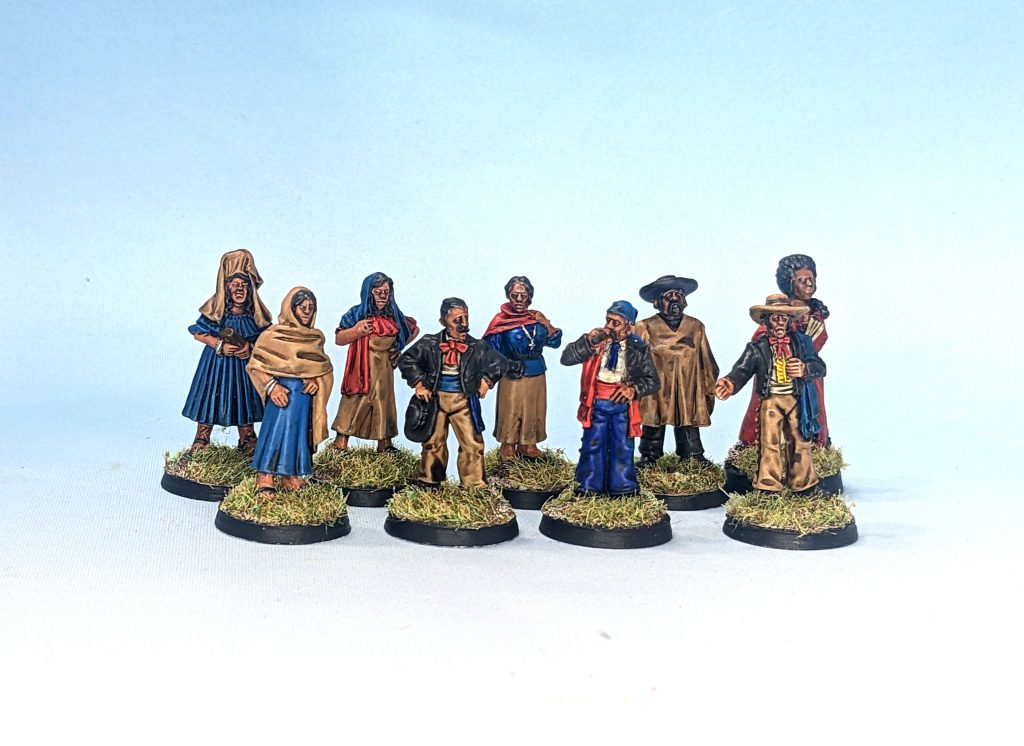
Media / Books to Read
No wargame is great without having some awesome books to read and a few films / documentaries to check out for inspiration. The Mexican – American War is a bit light on content but I have found some excellent sources through digging:
- PBS Mexican War documentary: this documentary produced in 1998, excellently researched and produced by PBS (America’s public TV station) includes many Mexican academic sources and Spanish speaking people, which is huge to me. Much of the history that is written is America-centric and we need to get the viewpoints of the people who were principally affected by the war. This is an excellent production – definitely worth your money even if you never wargame the conflict.
- One Man’s Hero: one of the only movies set in the conflict, it stars Tom Berenger as the leader of the San Patricio battalion – Irish deserters who left the American army after bigotry and prejudice in amongst the ranks. The acting is not great, the uniforms are sweet. I wouldn’t watch it if I wasn’t interested in the war.

- Ravenous: definitely not a ‘history of the war’ type movie, this is a horror movie set in a fort during the war. Actual uniform, drill, and equipment stuff in this movie is very light, but it’s an amazing story with great acting. Huge nods to Robert Carlyle, Neal McDonough, and Jeffrey Jones. Guy Pearce is the main actor. If you like horror movies this is a must-see – it is now my favorite horror movie.
- Books I haven’t read yet but come highly recommended: The Dead March, The Mexican War, The Training Ground .
- So Far From God: based on a quote by a 19thc leader of Mexico, this book is written by John S. D. Eisenhower, son of Dwight Eisenhower. It’s a great blow-by-blow and campaign level account of the entire war. Definitely worth reading.
- Monterrey is Ours!: reprinted letters of Lt. Napoleon Dana to his wife during the war. I love reading first person accounts of the conflicts I’m studying as it’s the best way to really understand the war. You can also glean minor stories for scenarios and campaign settings. Some of the letters are rather dry ‘my wife’ type stuff, but it’s definitely worth reading.
- Brassey’s History of Uniforms – Mexican-American War: an excellent visual source with lots of art and equipment pictures. This has been hugely important as I’ve been painting minis.
- The Mexican Soldier: an exhaustive data source with tables showing when certain units acquired certain parts of their uniforms, this is basically the source of info on Mexican uniforms during the time period.
- Armies of the US-Mexican War: another uniform guide that is basically a ton of different uniform plates for each unit and time period. We love to see it, folks.
- Gone to See the Elephant: a set of rules devised solely for the Mexican-American War, I haven’t delved super deeply on how the game works, but all the supplemental information and scenario rules etc. are amazing.
- So Far From God: a Sharp Practice campaign supplement that was written for V1 of Sharp Practice but still well worth purchasing today. Lots of awesome supplemental info and research. One of my favorite supplements I’ve ever purchased.
- War in Mexico (Anton Adams): an awesome coffee-table style history book with lots of art, maps, and uniform info. Tons of excellent battle and campaign info that won’t put you to sleep.
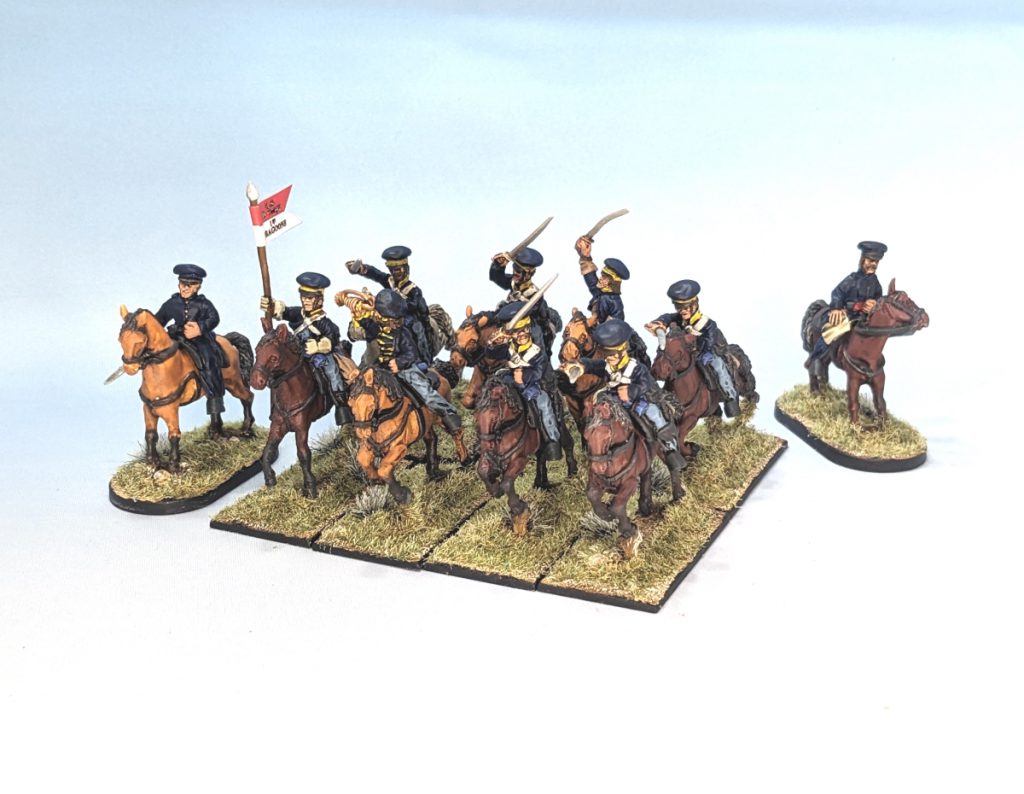
- The Mexican War 1846-1848: your bog standard Osprey campaign book. ‘Nuff said.
- Santa Anna’s Mexican Army 1821-48: your bog standard (but amazing) Osprey Elite series book.
- The Mexican-American War 1846-1848: Osprey Men-At-Arms series book with uniform info and sweet color plates.
Thanks for taking the time to read this and check back soon when we get to part two – how to game the war, what minis to use, what terrain to use, and eventually – why is it compelling?
¹Howe, D.W. (2007). What Hath God Wrought: The Transformation of America, 1815–1848. Oxford History of the United States. Oxford University Press. p. 705. ISBN 978-0-19-972657-8.
If you have any questions or comments feel free to drop us a note in the Comments below or email us at contact@goonhammer.com. And if you want regular updates in your inbox, subscribe to our newsletter.


